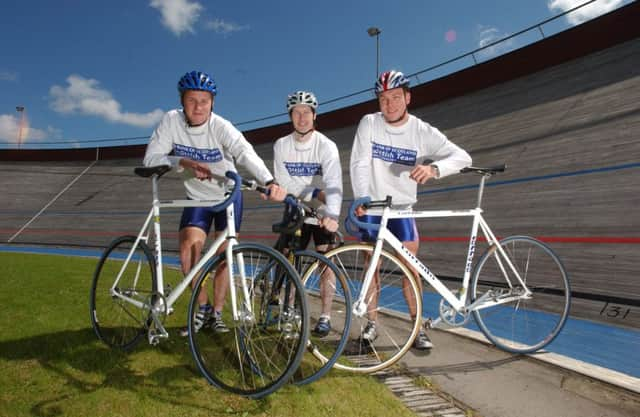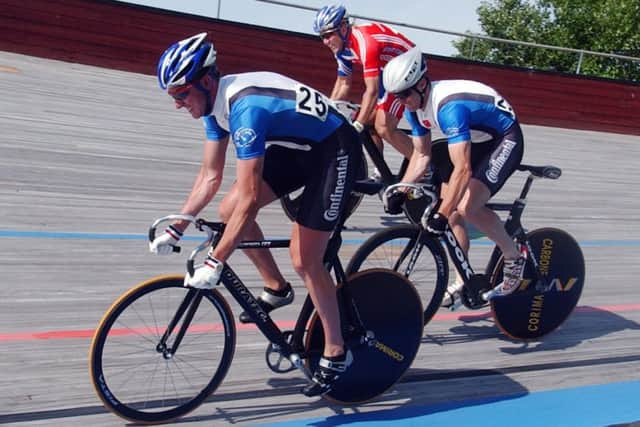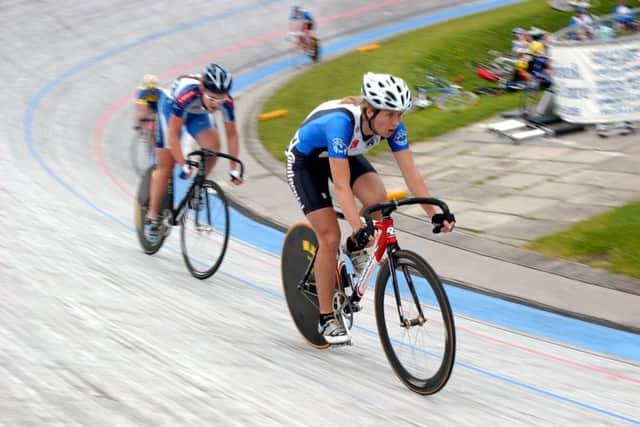End of an era as Meadowbank velodrome to close for final time


It has also offered many youngsters an introduction to cycling, initially through the kids’ club, Edinburgh Racers, and latterly thanks to the efforts of coaches at Edinburgh Road Club.
Built for the Commonwealth Games in 1970, Meadowbank was the first 250-metre timber track in the UK. A frequently-noted design flaw was the absence of a roof and it swiftly earned the nickname “Wellydrome” given the frequency with which racing was rained off because of the dangers of riding its steep banking in wet weather. Indeed, exposure to the elements remained a bone of contention throughout the velodrome’s life, with local politicians repeatedly failing to deliver the frequently-promised track upgrade.
Advertisement
Hide AdAdvertisement
Hide AdAlthough the venue was always something of a secret in the city, given its location in a corner of the Meadowbank complex, it was the scene of many cycling highlights, starting with the day when Edinburgh’s Brian Temple won a silver medal in the 10 mile event in 1970, making him Scotland’s first-ever Commonwealth cycling medallist.


With the games party over, the focus switched to local competition and the introduction of the Meadowbank Track League organised (and won) by Alan Nisbet, a man whose passion ensured the success of the velodrome, even when lack of maintenance allowed the surface to deteriorate. Nisbet died in 2000 but his contribution was never forgotten and was marked by a bench in the track centre bearing the inscription “Alan Nisbet: cycling was his raison d`etre”.
Nisbet had also been instrumental in working with Brian Annable and Angus Fraser to introduce the Meadowbank Grand Prix, which became a key fixture on the international circuit. A second event coinciding with the Edinburgh Festival was later added to the programme. It too became a major attraction on the racing calendar.
Nisbet and Annable also worked together to form the City of Edinburgh Racing Club which had its base at the track and eventually could count numerous World, Olympic and Commonwealth champions among its members. Sir Chris Hoy, Craig MacLean, Callum Skinner and Katie Archibald all topped the podium at global gatherings, while numerous others earned honours – Marco Librizzi, Kate Cullen and Louise Haston featuring among the club’s Commonwealth Games medallists, and members harvesting more than 300 British titles.
Advertisement
Hide AdAdvertisement
Hide AdAnnable was, and remains, a man with a tireless enthusiasm for the sport. He has a place in the British Cycling Hall of Fame, and was awarded an OBE in 2013 for services to cycling.


The Commonwealth Games visited Edinburgh for a second time in 1986 and bike racing continued to enjoy strong local support. Annable sought to capitalise on that enthusiasm and, in his history of the Edinburgh Grand Prix, he recalled how he had acquired the impressive Grand Prix trophy which was subsequently etched with the names of some of the sport’s leading protagonists.
“In 1988 I persuaded Edinburgh’s first woman Lord Provost, Eleanor McLaughlin, to present the prizes and to start the meeting on a tandem with Eddie Alexander (Commonwealth medallist) in a sprint match against the GP sponsor Ian McKay with Allister Watson (multi Scottish champion)”, he noted of McLaughlin, who was a non-cyclist.
“Eleanor became a cycling fan and decided that there should be a trophy for the Grand Prix. We went to the vaults and found the biggest silver trophy not in use that was given to the council by the captain of the wartime battleship HMS Howe in 1958 when decommissioned at Inverkeithing.”
Advertisement
Hide AdAdvertisement
Hide AdHoy’s name features on that impressive piece of silverware alongside those of several other world champions and riders from many countries. Their successes will now be consigned to the history of the London Road velodrome, which will host a series of activities on Saturday to mark its place in Scottish cycling folklore.


It will be a celebration of 47 years of the track, with two hour taster sessions – pre-registration is required on Edinburgh Road Club’s website – from 10am until noon, followed by a youth team training session and a final opportunity for accredited riders to take to the boards.
A roll of honour, photographic exhibition, awards and closing remarks from some of the individuals involved over the years will mark the demise of a facility that has been central to Edinburgh’s sporting achievements over almost five decades.